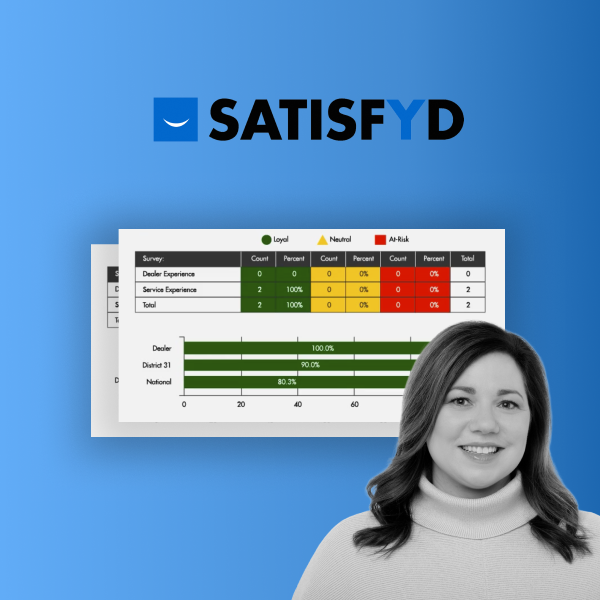In business as in life, the only constant is change. The picture can be foggy and the risks are substantial, but it’s your job to ensure business is executed effectively and efficiently. For larger corporations, a single slip could cost millions of dollars in lost profits. For smaller companies, it could mean death. This constantly puts the strategic, analytical, and management skills of the C-level executives to the test.
Companies are changing their business process to operate leaner and meaner than ever before — but how do you know that you’re operating as effectively and efficiently as possible? Without this question concretely answered, you’re leaving money on the table.
Data Opens the Door, BI and Analytics Guides You Through It
Smart data management exposes the holes in your boat. Without the proper, comprehensive insight into company health, you’re undoubtedly bleeding money into dangerous waters.
Most companies of a certain size already have formal data management and analytics systems in place that provide executives and managers with key performance indicators (KPIs) and relevant reports regularly or at request.
They have sizeable data warehouses managed by their IT departments. Massive amounts of time and resources are spent on data management and analysis, yet they only manage to scratch the surface of potential. Moreover, they regularly fail to fully support management at critical times, when crucial decisions must be made at short notice.
Does this sound familiar?
If your answer is “yes, but …” let me stop you right there. All too often I’ve heard from employees around the world who believe they just don’t have the time or resources to add business intelligence (BI) to their agenda or learn how to optimize its usage. These companies are suffering for it. Many, without even knowing it.
There are several ominous warning signs that a company is letting precious dollars slip through the cracks. We want to stop that by highlighting five ways a well-managed BI strategy can help you cut costs and improve the overall health of your business operations.
Five Ways BI Helps You Cut Costs and Streamline Operations
#1: Eliminate the guesswork when it comes to customer loyalty
Customer loyalty is harder earned than ever. In a rapidly changing consumer landscape, what does customer loyalty even mean anymore, and how can it be quantified?
There are both objective and subjective indicators of customer loyalty, both of which should be monitored closely. KPIs like conversion rate, churn rate, renewal rate, likelihood to recommend, and average product usage can all give you insight into your customers' loyalty and overall sentiment as it relates to your brand.
Getting your arms around customer loyalty helps prove the effectiveness of marketing in real numbers. You can drill down to see which campaigns worked and which didn't, and control marketing expenses by focusing on what matters most. This knowledge helps enhance engagement with customers in a more meaningful and informed way which builds trust and, ultimately, loyalty.
#2: Depend less on your IT department to pull a report or analysis
If you still rely on a manual reporting process, there are many steps involved in hopefully getting an accurate representation of your company data. Your IT department must extract the data, manipulate it by hand based on your needs, and validate the information to ensure reports are accurate and up to date. Usually, it can only be done by a small team of experts, so those who need the information can’t pull it or adjust it themselves. For many companies, this means it could take days to pull a single analysis.
Generating reports and analyses this way is time-consuming and complex. If you don’t have a degree in computer science, you aren't likely to master the system. And information doesn’t do you any good if you can’t access it when you need it.
The solution is a BI and analytics platform that automates the reporting process on the back end while providing users of varying skill levels with an easy-to-use interface through which they can access the latest reports, review a multi-point dashboard, or even drill further down into the numbers independently.
#3: Start monitoring your KPIs every day - yes, EVERY day
A KPI doesn’t indicate much if it’s only being examined once a month. KPIs must be measured frequently. At a minimum, they should be monitored daily. Ideally, they’re monitored 24/7. If it takes days from the moment you request an analysis to the moment it lands on your desk, it’s simply not possible to make strategic business decisions.
Extracting data every day, multiple times a day keeps a steady finger on the pulse of your company's health by observing not only the large peaks and valleys but any small changes in the business that could ultimately translate to big bucks.
#4: Gain clear insights into operations
As the CEO, “cloudy” is not an adjective that should ever be in your business vocabulary, unless you’re discussing how the weather might impact the company picnic. How can you be expected to make decisions without full insight into all of the operations of your company? You should have the power to translate data into visualizations at the touch of a button. What was once a complicated spreadsheet suddenly becomes a simple answer.
But it’s not just about data graphs; it’s about working within the information to see where the trends begin and how to move forward with them. No detail is too small with the right tools. The more the picture of a company comes into focus, the more confidently and intelligently decisions can be made.
#5: Be sure everyone is on the same page
Not only is the number of available data sources growing, but so is the complexity of the data. As a result, analytics experts are spending an increasing amount of time developing reports and analyses for an extended user base within a company. With different users manipulating data differently, it’s challenging to maintain a consistent view across the company.
This is especially apparent when those reports are generated in Excel and manipulations live only in an individual’s own files. These might then be shared through paper reports, word of mouth, emails, or via the company network, causing further fragmentation and loss of control of data consistency. It’s critical to work with a single analytics platform that provides a consistent user experience. This way, any changes or manipulations are reflected in an instant.
Top-floor executives aren’t the only ones who need to prove flexible and agile. Transparency and clear objectives help change management trickle down the organization. Analyses must be easily shared throughout the company, with only relevant data for each individual or department shown automatically. Dashboards can also be added to monitors throughout the organization, so each department and team can effortlessly follow the progression of ongoing projects.
What's the Biggest Cost-Cutting Idea of All?
If you haven't figured it out by now, the solution to all of those problems is a comprehensive BI strategy.
If you don't have one, you're missing out. Analytics are dramatically changing the way companies collect and manage data. They’re transforming organizations from data-responsive to data-driven, and from a C-level leadership position, they’re doing much more than that.
In the fast-paced reality of corporate management, BI provides the most valuable commodity of all: time.
Time wasted waiting for requested reports and spent in performance briefings and meetings that could have been avoided. Not to mention time lost before problems or KPI deviations find their way through the system and land on your desk. It places the data and analysis needed to make informed, fast, and intelligent decisions right at your fingertips.
There's no time to hesitate. As we all know, in the business world, time equals money. It’s time to turn your valuable data into valuable dollars.





